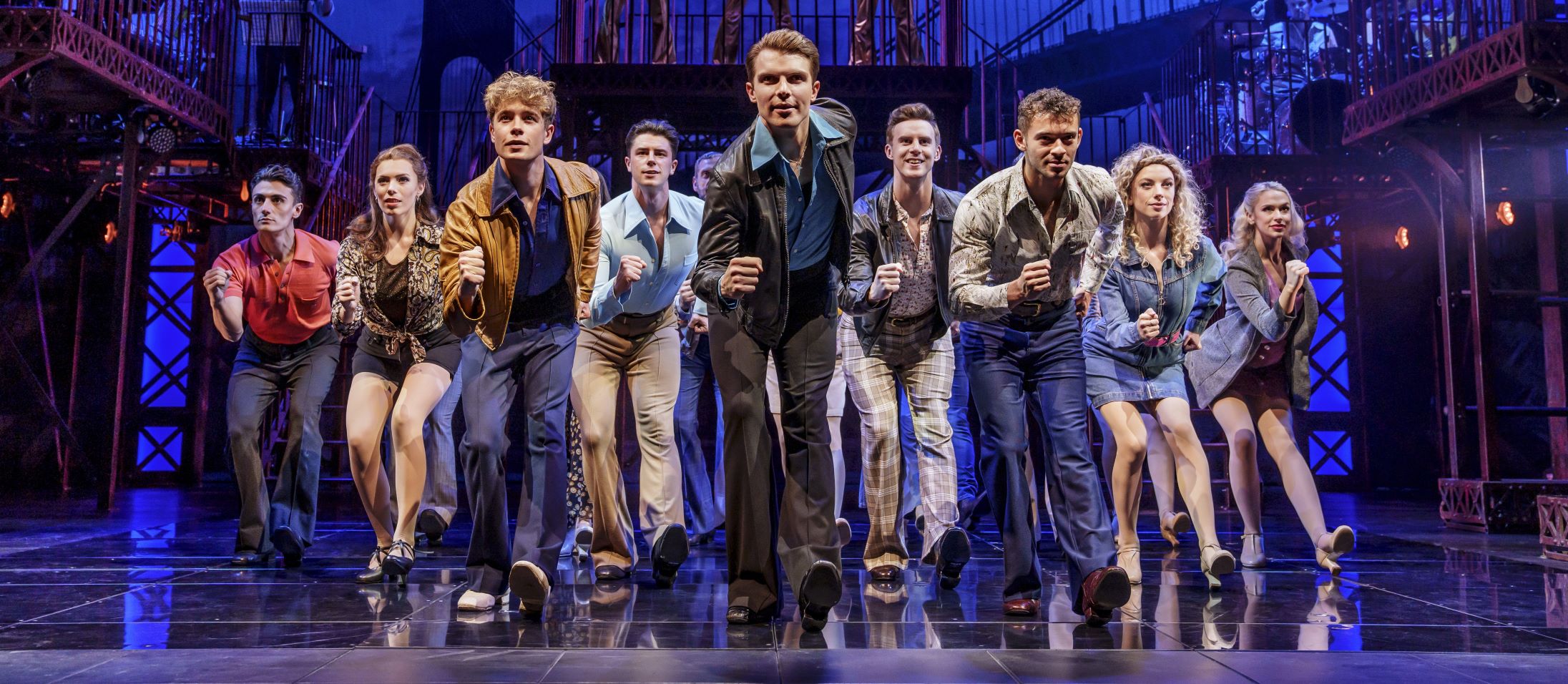
Culture Writer Jasmine Sandhar reviews Saturday Night Fever and finds the production to capture the feeling of fabulous frenzy through stellar music and spellbinding dancing
Having never seen the hit 1977 film directed by John Badham and starring the legendary John Travolta, I was not entirely sure of what to expect from the musical performance of Saturday Night Fever produced by Bill Kenwright. It has been quite a long time since I have entered the theatre completely blind, unaware of the plot or characters on the stage, but after my experience last night, it is an act I would highly recommend others to partake in more often – I, for one, certainly will be!
Unlike myself, the majority of the audience appeared to be avid fans of the show, excitedly chatting away about what they were most looking forward to, which provided a buzzing atmosphere before anything had even occurred. As soon as the curtain rose, it immediately felt as though we had been transported back in time to the world of the 1970s with chest-hugging shirts tucked into dramatically flared trousers. These fashion statements accompanied by thick Boston accents and a variety of strutting walks across the stage set the scene of Bay Ridge, New York.
as the curtain rose, it immediately felt as though we had been transported back in time to the world of the 1970s
It is here that the main protagonist, Tony Manero (Jack Wilcox), resides with his highly religious Italian-American family. Trapped in his extremely low-paid job at a paint store, Tony finds his escape through the glitz and glamour of the local discotheque, 2001 Odyssey. Alongside his four close male friends – Joey, Double J, Gus and Bobby C – Tony has fun dancing the night away with as many women as possible, who all very obviously fancy him, especially Annette (Billie Hardy). However, Tony only has eyes for Stephanie Mangano (Rebekah Bryant), an incredible dancer who has big career aspirations as an employee in Manhattan. The pair enter a competition as dance partners to win $1000, effortlessly pirouetting and grooving across the stage in a way that secured them a sure win.
This is the highlight of the entire show: the dancing. Although a few of the moves were slightly questionable, Bill Deamer’s choreography is generally spellbinding. Deamer’s blending of classic gesticulations of the era, such as the Disco Finger and The Snap, with modern twists of unflinchingly straight arms and shaking hips provided the dynamic needed to get the audience ‘ooh’ing and ‘aah’ing throughout. The uniformity of the entire ensemble during these dance numbers was an incredible achievement, too, and there was even a sense of cohesion in the individual flairs of each dancer that gave the entire thing that professional edge.
uniformity of the entire ensemble during these dance numbers was an incredible achievement
Of course, there could be no dancing without music, and the band did a stellar job of recreating the movie soundtrack. The combination of electric synths, syncopated off-beat drum rhythms, piano glissandos and funky basslines – occasionally interrupted by solo trumpet lines – was the blend of sound needed to form the backing track for the vocals. Most of the songs were from the repertoire of The Bee Gees, including all their most celebrated and catchy number ones like ‘Stayin’ Alive’, ‘How Deep Is Your Love’, ‘More Than A Woman’ and ‘You Should Be Dancing’, to name a few.
The musical trio (played by Drew Ferry, Oliver Thomson and Al Jenkins) were a sight to behold, constantly towering above the action below on a raised platform in gold foil jumpsuits. Not only did they look like the spitting image of Maurice, Robin and Barry, but they also sounded the exact same with their rich harmonies and impressive falsetto. On a personal note, this was particularly nostalgic for myself as someone who grew up listening to the vinyl version of these iconic tracks – it almost felt as if I was seeing my favourite artists live in concert for the first time.
The cast managed to capture this feeling of fabulous frenzy
Another huge success of the performance was the set design, which featured numerous huge disco balls that shimmered beautifully any time the multicoloured lights hit them. The transitions between all of the different locations of Tony’s house, the Odyssey, the dance school, the diner and the bridge were perfectly executed through the utilisation of pulleys to exchange the array of backdrops. The attention to detail on the smaller things, such as the picture of Father Frank Jr. displayed as a centerpiece in the Maneros’ living room or the typical teenage posters stuck up on Tony’s wall, brought the fictional world to life in a way that made the audience feel as though they were in the film itself and knew the characters more intimately.
Despite the punctuation of sub-plot commentary on the effects of living in a working-class neighbourhood, Saturday Night Fever is intended to be a feel-good disco inferno. The cast managed to capture this feeling of fabulous frenzy, as was exhibited by the standing ovation of the audience and clapping along during the dazzling encore.
Rating: 4/5
Enjoyed this? Read more Redbrick Culture here!
Ballet Review: The Nutcracker: A Double Perspective

Comments